Interregionalism and the Americas
Interregionalism and the Americas
Edited by
Gian Luca Gardini, Simon Koschut,
and Andreas Falke
LEXINGTON BOOKS
Lanham Boulder New York London
Published by Lexington Books
An imprint of The Rowman & Littlefield Publishing Group, Inc.
4501 Forbes Boulevard, Suite 200, Lanham, Maryland 20706
www.rowman.com
Unit A, Whitacre Mews, 26-34 Stannary Street, London SE11 4AB
Copyright 2018 The Rowman & Littlefield Publishing Group, Inc.
All rights reserved . No part of this book may be reproduced in any form or by any electronic or mechanical means, including information storage and retrieval systems, without written permission from the publisher, except by a reviewer who may quote passages in a review.
Chapter One Interregionalism and the Americas: A Conceptual Framework by Gian Luca Gardini and Andrs Malamud originally appeared as Debunking Interregionalism: Concepts, Types, and Critique-With a Pan-Atlantic Focus, in Interregionalism across the Atlantic Space , Volume 15 of the United Nations University Series on Regionalism, pp. 1531, (c) Springer International Publishing AG 2018. Used with permission of Springer Nature.
Chapter Eight Trade Interregionalism between South America and Southern Africa by Frank Mattheis reprinted with permission of Leipzig University Publications.
British Library Cataloguing in Publication Information Available
Library of Congress Cataloging-in-Publication Data
ISBN 978-1-4985-7687-1 (cloth : alk. paper)
ISBN 978-1-4985-7688-8 (electronic)
 The paper used in this publication meets the minimum requirements of American National Standard for Information SciencesPermanence of Paper for Printed Library Materials, ANSI/NISO Z39.48-1992.
The paper used in this publication meets the minimum requirements of American National Standard for Information SciencesPermanence of Paper for Printed Library Materials, ANSI/NISO Z39.48-1992.
Printed in the United States of America
Contents
Antonio Patriota and Daniel S. Hamilton
Gian Luca Gardini
Gian Luca Gardini and Andrs Malamud
Anna Ayuso
Mario Torres Jarrn
Nelia Miguel Mller
Christina Stolte
Simon Koschut
Andreas Falke
Frank Mattheis
Susanne Gratius
Gonzalo S. Paz
Sara Ruiz Valverde
Gian Luca Gardini, Simon Koschut, and Andreas Falke
Interregionalism, as we conceive it today, did not find fertile ground until the second half of the 20th century. The regions of the SouthAfrica, Asia, the Middle East, and Latin Americahad been subjected to relations of dominanceof a colonial nature or within areas of influencea reality which established a hub and spokes logic. The independence of Latin American countries during the 19th century did not translate itself automatically into diversified relations with other regions of the world. In other parts of the South, decolonization initiated a process that would foster interregionalism, allowing for mutually beneficial relations. The Bandung Conference (1955) was a milestone in the history of South-South relations, with the creation of the Non-Aligned Movement. Later the G77 represented a new breakthrough for coordination on economic and social issues at the United Nations.
The end of the Cold War and its ideological alignments improved conditions for direct relations among regions. Economic regionalism gained momentum, consolidating regional identities and favoring trade. The creation of the Common Market of the South (MERCOSUR) and the Southern African Development Community (SADC) coincided with the end of the Cold War. By the end of the 1990s, MERCOSUR and the European Union had started negotiations with a view to signing a free trade agreement, which is now expected to be completed shortly. This marked the beginning of Latin Americas engagement with modern forms of interregionalism as analyzed in the academic literature.
The 21st century has been particularly conducive to the strengthening of interregional relations. From the Brazilian perspective, the creation of the South American Community of Nations (2004), which gave way to UNASUR in 2008, contributed to this trend, reinforcing a South American identity that until then had played a secondary role within the Americas. The South AmericaArab Countries (ASPA) and South AmericaAfrica (ASA) summits, inaugurated in Brasilia in May 2005 and in Abuja in November 2006 respectively, are examples of an innovative interregionalism. At the same time, the Group of Rio would evolve into the Community of Latin American and Caribbean States (Celac) in 2010. Today, the dialogue between Celac and the UE brings together nations representing over a billion people, on both sides of the Atlantic.
From a Latin American and a Brazilian perspective, other initiatives deserve to be highlighted. The Zone of Peace and Cooperation of the South Atlantic (ZPCSA, 1986) brings together 24 countries of Western Africa and South America. As the main security forum in the South Atlantic, coordination within ZPCSA has contributed to the promotion of an area free of nuclear weapons and other weapons of mass destruction. Mechanisms such as IBSA (2003) and BRIC (2009, later BRICS) illustrate the same trend. Developing countries such as Brazil, India, and South Africa, among others, have become active participants in G20 summits in the aftermath of the 2008 financial crisis. Relations between developing states individually and regional groups also developed. In 2011, I signed, as Minister of Foreign Affairs, a Treaty of Friendship and Cooperation between Brazil and ASEAN. With the EU, Brazil established a Strategic Partnership in 2007.
This book is a timely and valuable contribution to both academic and policy discussions on interregionalism. Two features of the book stand out in my view. First in its genre, it focuses on the Americas, and highlights the composite nature of this continent, where different regions (the Americas as such, South America, Latin America, and subregions within it) and key states (namely Brazil and the United States, but not exclusively) engage with other regions of the world at different levels. This analysis expresses the complexity of both the phenomenon of interregionalism and the region of the Americas and its subparts as active actors in international relations. Secondly, the conceptual framework aptly captures the summitry exercise as a key policy element of interregionalism. In my capacity as a policy-maker and a diplomat, I have hands-on experience of how political direction and determination are indispensable factors to allow interregional relations at different levels, including civil society exchanges, to develop and flourish.
Interregionalism can play a key role in enhancing international cooperation. However, one should not consider it as an alternative to multilateralism. We should guard against forms of interregionalism that feed rivalry or exacerbate tensions between different cultural or religious traditions. The interregionalism that deserves to be embraced is one that is placed at the service of universal objectives such as durable peace and sustainable development. Universal multilateralism, in this context, retains its full relevance as the best means at our disposal to build platforms for cooperation to overcome contemporary global challenges.
Antonio Patriota
Largely unnoticed by pundits and politicians, the four Atlantic continents of North and South America, Africa and Europe are engaging and interacting in a whole host of ways that are shifting the contours of interregional interdependence and global power. With little fanfare, the Atlantic Basin is becoming a central arena of interregionalism and a microcosm of key global trends, including the diffusion of power, deepening interconnections, and spreading transnational risks. The Americas are at the core of these processes and a bridge between the Atlantic and the Pacific spaces. This volume is a timely contribution to unpack and understand these dynamics.


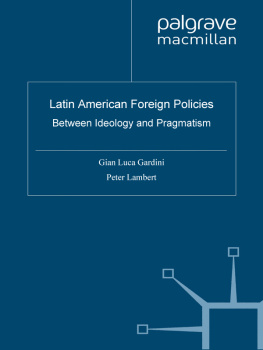
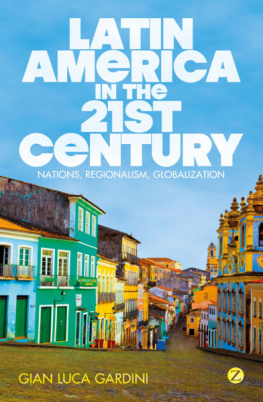

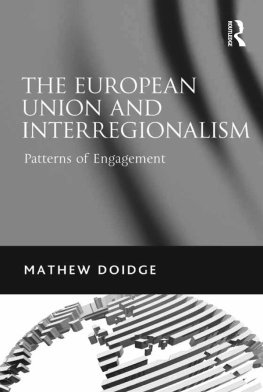
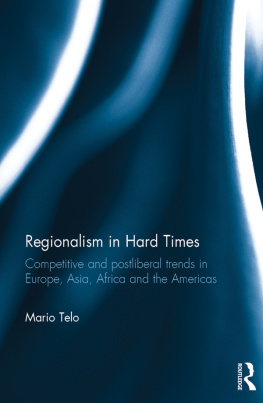
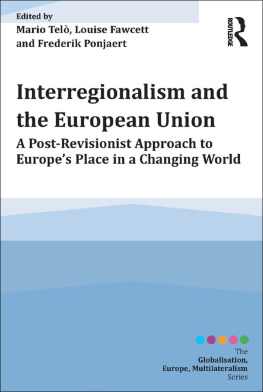
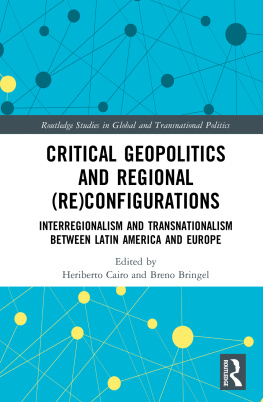





 The paper used in this publication meets the minimum requirements of American National Standard for Information SciencesPermanence of Paper for Printed Library Materials, ANSI/NISO Z39.48-1992.
The paper used in this publication meets the minimum requirements of American National Standard for Information SciencesPermanence of Paper for Printed Library Materials, ANSI/NISO Z39.48-1992.